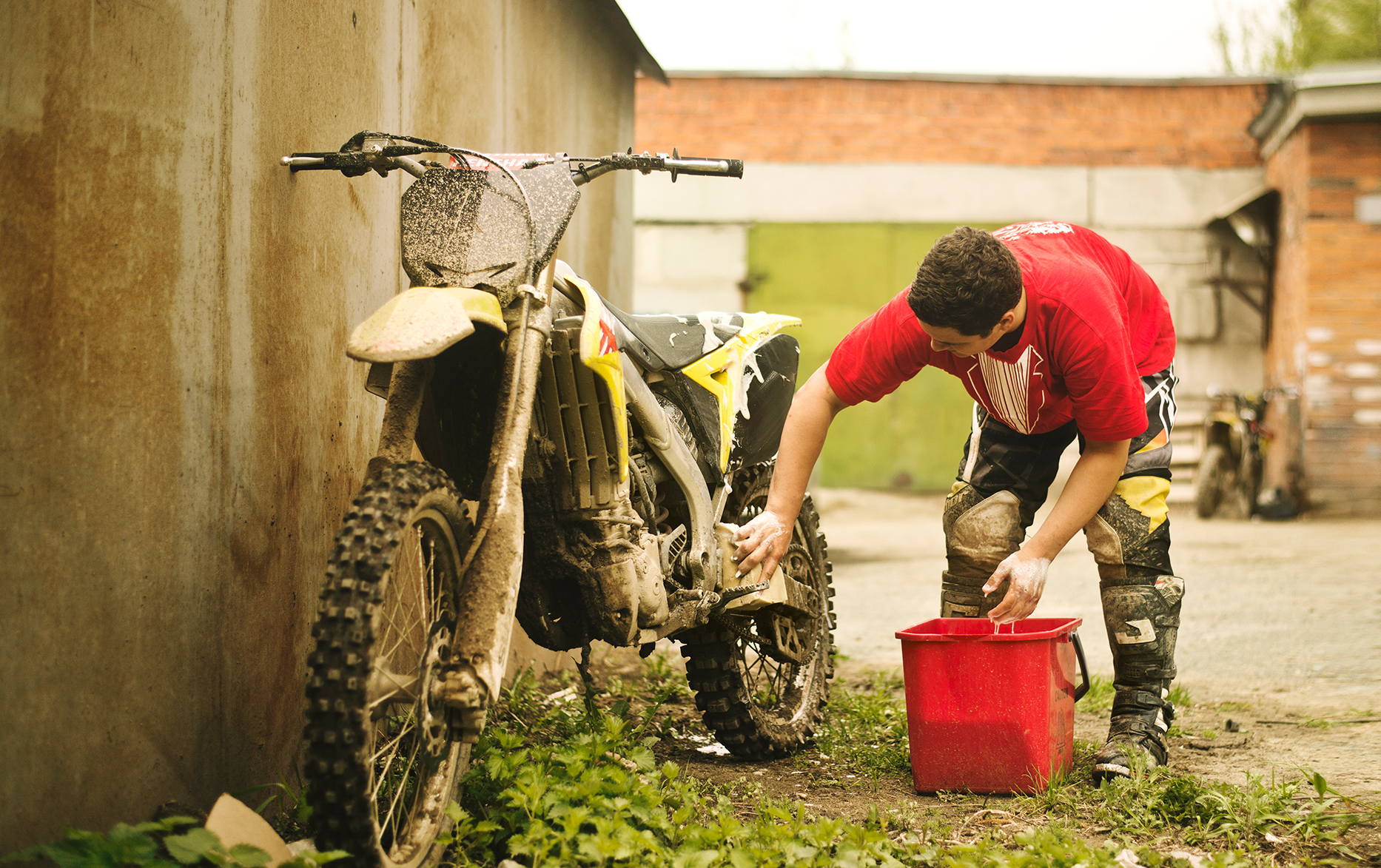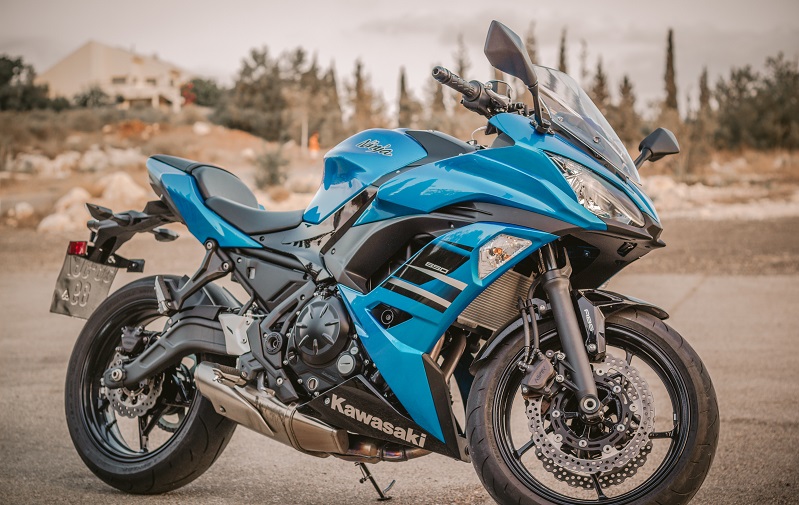
Your motorcycle is a prized possession, a symbol of freedom and adventure that takes you on exhilarating rides and unforgettable journeys. Just like any other valuable asset, it deserves proper care and maintenance to keep it in top condition and ensure its longevity. Regular washing is an essential part of motorcycle maintenance, not just for aesthetic reasons but also to protect its components and preserve its overall performance.
Gathering Supplies and Preparing the Motorcycle
Before you embark on your motorcycle washing mission, it’s crucial to gather the necessary supplies and prepare your bike for the process. Here’s what you’ll need:
-
Motorcycle-specific wash soap or shampoo:
-
Avoid using harsh car detergents, as they can damage the delicate paint and finishes of your motorcycle. Opt for a specialized motorcycle wash product that’s gentle yet effective in removing dirt and grime.
-
Two buckets: The two-bucket method is a proven technique for preventing the spread of dirt and debris during washing. Fill one bucket with clean water and motorcycle wash soap, and the other with clean water for rinsing.
-
Soft wash mitt or sponge:
-
Choose a soft and non-abrasive wash mitt or sponge to prevent scratching the paint. Avoid using brushes with stiff bristles, as they can cause swirl marks and damage the finish.
-
Microfiber towels: Microfiber towels are the best choice for drying your motorcycle, as they are super absorbent and lint-free, leaving no streaks or residue behind.
-
A garden hose or pressure washer (with adjustable nozzle): A garden hose provides a gentle stream of water for rinsing, while a pressure washer (with an adjustable nozzle) can be used for stubborn dirt and grime. Ensure the pressure is not too high, as it can damage delicate components.
-
A stepladder or stool (if necessary): If you have a tall motorcycle, a stepladder or stool will provide safe access to higher areas for thorough washing.

Once you have your supplies ready, it’s time to prepare your motorcycle for washing. Choose a shaded area to work in, as direct sunlight can cause water spots and soap to dry too quickly. Allow the engine to cool down completely before starting, as hot surfaces can pose a safety hazard. Remove any loose items or accessories from the motorcycle, such as saddlebags or phone mounts, to avoid them getting wet or interfering with the washing process. Finally, cover sensitive components like the exhaust pipes and electrical connections with plastic bags or towels to protect them from water and cleaning agents.
Rinsing Off the Dirt and Debris
Before you start lathering up your motorcycle with soap, it’s essential to give it a thorough initial rinse to remove loose dirt, dust, and debris. This will prevent these contaminants from being rubbed into the paint during washing, which can cause scratches and swirl marks. Use a gentle stream of water from a hose to rinse the entire motorcycle, paying attention to areas with heavy dirt accumulation, such as the wheels, undercarriage, and fenders. Avoid using high-pressure water, as it can force dirt into crevices and delicate components, potentially causing damage.
Washing the Motorcycle
Now comes the main event: washing your motorcycle. The two-bucket method is the safest and most effective approach to prevent the spread of dirt and debris. Fill one bucket with clean water and motorcycle wash soap, and the other with clean water for rinsing. Dip the wash mitt or sponge into the soapy water and gently wash one section of the motorcycle at a time. Start with the upper body, such as the fuel tank, fairings, and handlebars, and then move on to the lower body, including the wheels, fenders, and undercarriage.
As you wash, be gentle with the wash mitt or sponge, avoiding excessive scrubbing that can scratch the paint or other surfaces. Rinse the wash mitt or sponge frequently in the clean water bucket to prevent dirt buildup and cross-contamination. Pay attention to areas with intricate detailing, such as decals and logos, and use a soft brush or toothbrush to clean them carefully.
Cleaning Specific Components
While the two-bucket method works well for general washing, certain components require specialized attention.
-
Wheels and Tires: For the wheels, use a dedicated wheel cleaner and a soft brush to remove stubborn dirt, grime, and brake dust. Pay attention to the spokes, brake discs, and hub areas. For particularly dirty wheels, soak them in the soapy water solution before scrubbing. Rinse thoroughly and dry with a microfiber towel. For the tires, use a mild tire cleaner and a soft brush to remove dirt and grime. Avoid using harsh products or abrasive brushes that can damage the tire surface.
-
Engine and Exhaust: The engine and exhaust require degreasing and cleaning to remove oil buildup and grime. Use a degreaser or engine cleaner specifically designed for motorcycles, and apply it with a soft brush or sponge, avoiding electrical components. Rinse thoroughly and dry with a microfiber towel.
-
-
For chrome exhaust pipes, use a dedicated chrome cleaner and polish to restore their shine.
-
Fairings and Bodywork: Repeat the washing process with the soapy water solution and wash mitt or sponge, paying close attention to crevices, decals, and any areas with intricate detailing. Rinse thoroughly and dry with a microfiber towel in a wiping motion to remove excess water and prevent water spots.

Drying and Final Touches
Once you’ve finished washing the entire motorcycle, it’s crucial to dry it completely to prevent water spots and rust. Use a clean microfiber towel to dry the motorcycle section by section, starting with the upper body and working your way down. Pay particular attention to areas that tend to retain moisture, such as under the seat, around the lights, and between the spokes. You can also use a leaf blower (if available) to quickly remove excess water from hard-to-reach areas like the engine compartment and behind the fairings.
After drying, a finishing touch is to apply a high-quality motorcycle wax or sealant to protect the paint and prevent fading from UV rays and environmental elements. Follow the manufacturer’s instructions for proper application and curing time of the wax or sealant. Finally, buff the wax or sealant to a shine using a clean microfiber towel.
Conclusion
Regular washing is a simple yet essential part of motorcycle maintenance. By following these steps and using the proper techniques, you can effectively clean your motorcycle, protecting its appearance, preventing damage from corrosion, and ensuring optimal performance. Washing your motorcycle not only keeps it looking sharp but also allows you to inspect it for any potential issues that may require attention. Make motorcycle washing a routine part of your care regimen, and your trusty steed will reward you with years of reliable service and exhilarating rides.
-
Leave a Reply